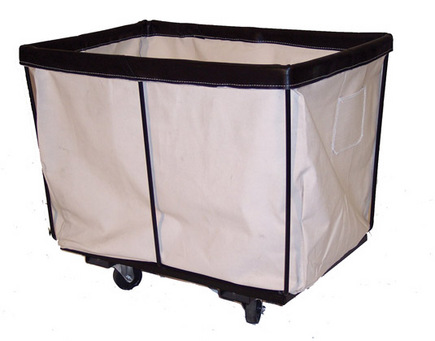It began, as frustrating experiences often do, on a driving range. Karen Beck couldn’t understand what her husband, Chip, a touring pro and four-time winner on the PGA Tour, was asking her to do when she gripped the golf club. Realizing that she couldn’t have him place her hands in the correct position before every shot, she told him she needed a visual aid that would show her when she had done it correctly on her own.
It began, as frustrating experiences often do, on a driving range. Karen Beck couldn’t understand what her husband, Chip, a touring pro and four-time winner on the PGA Tour, was asking her to do when she gripped the golf club. Realizing that she couldn’t have him place her hands in the correct position before every shot, she told him she needed a visual aid that would show her when she had done it correctly on her own.
Then she thought about the Coors Light bottles that change colors when the beer reaches the recommended temperature for drinking, and wondered if a similar technology could be used to develop a teaching aid for properly gripping a golf club. The Becks read about the chromatic inks used in the Coors bottles and their research eventually led them to LCR Hallcrest in Glenview, Illinois, a longtime specialist in color-change printing.
The origins of the company go back to proprietary liquid crystal and microencapsulation technologies developed 40 years ago, explains National Sales Manager Scott Szafraniec. “We became a screen printer and converter of finished color-change labels and components because nobody else really wanted to do it in the late 1970s.” The Becks’ idea was an unusual order for the company, which operates a second US facility in Tampa and two others in the UK. Though LCR Hallcrest has been involved in a number of consumer products over the years, including the novelty mood rings of the 1970s, its primary markets are medical thermometry and other industrial labels that measure environmental changes.
 The Becks’ concept for the product known as the GripGuide was a training aid that would give players three distinct cues: graphics to show where their thumbs should be placed, tactile guides to help them feel the correct positions in their fingers and palms as they took their grips, and a change in appearance after they released the club to show them how they did. The team at LCR Hallcrest, led by Director of Engineering and R&D Chuck Sapienza, realized that the product would need to be extremely thin, flexible, and highly durable, yet also removable with no adhesive residue left behind. “It’s a training aid and you can’t use those in regulation play or in competition,” Szafraniec explains. “It had to be something you could use on the driving range or in a practice round.” It also had to function properly whether the user was at a chilly Minnesota driving range in the spring or a humid Florida course in midsummer. “From our standpoint, we had to develop a liquid crystal system that would change color throughout the temperature range the product would be used in, basically from 40 to more than 100 degrees Fahrenheit.”
The Becks’ concept for the product known as the GripGuide was a training aid that would give players three distinct cues: graphics to show where their thumbs should be placed, tactile guides to help them feel the correct positions in their fingers and palms as they took their grips, and a change in appearance after they released the club to show them how they did. The team at LCR Hallcrest, led by Director of Engineering and R&D Chuck Sapienza, realized that the product would need to be extremely thin, flexible, and highly durable, yet also removable with no adhesive residue left behind. “It’s a training aid and you can’t use those in regulation play or in competition,” Szafraniec explains. “It had to be something you could use on the driving range or in a practice round.” It also had to function properly whether the user was at a chilly Minnesota driving range in the spring or a humid Florida course in midsummer. “From our standpoint, we had to develop a liquid crystal system that would change color throughout the temperature range the product would be used in, basically from 40 to more than 100 degrees Fahrenheit.”
Advertisement
For the base substrate, the company settled on a 2-mil woven polyester film from Wortham Industries, coated on both sides with black urethane and paired with a specially formulated 1-mil acrylic transfer tape for the adhesive. First, the liquid crystal color-change layer was printed, which required four passes on a single-color screen-printing press. Next, the three graphic colors – orange, green, and white – were printed using a solvent-based ink. Then, an overprint varnish developed in house was applied to not only seal the liquid crystal layer, but also mimic the feel of a golf grip and prevent the club from slipping in the player’s hands.
Finally came the trickiest part of the job: the tactile layer consisting of three horizontal lines running down the length of the GripGuide and a circular pattern of raised dots where the club is intended to rest at the base of a player’s palm. The team looked into various tactile ink systems offered by their traditional vendors but couldn’t find one with the three-dimensionality they desired. “Most of the tactile feels came from a matte ink that was spot printed over a glossy finish,” Szafraniec explains. “It gave a bit of a tactile feel because you could sense the change from smooth to matte, but for this application, we really needed to have some depth to it.”
The answer came from garment screen printing – a place few industrial label manufacturers would have thought to look. Working with International Coatings, the team realized that a plastisol “cocktail” consisting of a standard base modified with a combination of BlowOut (puff) and Granite special effects provided the tactile feel, adhesion, and flexibility that was required.
The first challenge the team encountered in working with the unfamiliar ink system was getting a sufficient ink deposit. They started with a 125 mesh using their standard screen coating procedures but found they weren’t getting enough of the material down, so they eventually switched to a 300-micron capillary film from Ulano designed for high-density and other thin-film applications. Then they realized that the plastisol didn’t adhere as well to the overprint varnish as they had expected, requiring a change from their usual varnish flood coat to a more complicated spot coat that required the artwork to be re-engineered. “If you look closely, everything in the design was knocked out so that the liquid crystal was not in direct contact with the plastisol nor the graphic inks and varnish,” Szafraniec says. “It would have made our lives extremely easier if it could’ve been, but the plastisol did not adhere well to the varnish and the durability wasn’t there, so we had to print it directly to the substrate.”
The curing temperatures required for the plastisol introduced further uncertainties. As Szafraniec notes, everything else the company does involves solvent-based inks dried at 120 degrees Fahrenheit. Cranking up their conveyor dryers to more than 300 degrees Fahrenheit was new territory for them, and by the time the job reached this final step, it had already been through the oven eight times, so the effects on the previously printed layers and the substrate itself were important considerations. “Historically, the liquid crystal inks tend to fade out at these types of temperatures,” Szafraniec notes. “It was critical to make sure our color-change material, the staple of the project, wasn’t going to die in the curing process.”
The Becks have learned that their GripGuide, which they originally envisioned as a training tool for adults, is more widely embraced by golf instructors in working with groups of younger players. Instead of spending hours making sure that each child has a correct grip, the teachers can more quickly move onto other aspects of the game.
Advertisement
For the team at LCR Hallcrest, the satisfaction came from finding a solution to a deceptively complicated challenge. “A lot of engineering went into something that at the end of the day seems like a relatively simple product,” Szafraniec says. “It wasn’t an overnight solution. It took a good year to develop it, find the substrate, go through all the printing steps, and test it to make sure the product performed properly.” For Szafraniec, a self-avowed “golf junkie,” it didn’t hurt that this product testing process included time at the range getting pointers from one of only six players ever to break 60 in PGA competition – Chip Beck.
Explore the rest of our October/November 2016 issue or check out more Print Tech columns.


 Case Studies2 months ago
Case Studies2 months ago
 Art, Ad, or Alchemy2 months ago
Art, Ad, or Alchemy2 months ago
 Andy MacDougall2 months ago
Andy MacDougall2 months ago
 Columns3 weeks ago
Columns3 weeks ago
 Editor's Note2 weeks ago
Editor's Note2 weeks ago
 Marshall Atkinson3 weeks ago
Marshall Atkinson3 weeks ago
 Thomas Trimingham2 months ago
Thomas Trimingham2 months ago
 News & Trends2 months ago
News & Trends2 months ago
 The Becks’ concept for the product known as the GripGuide was a training aid that would give players three distinct cues: graphics to show where their thumbs should be placed, tactile guides to help them feel the correct positions in their fingers and palms as they took their grips, and a change in appearance after they released the club to show them how they did. The team at LCR Hallcrest, led by Director of Engineering and R&D Chuck Sapienza, realized that the product would need to be extremely thin, flexible, and highly durable, yet also removable with no adhesive residue left behind. “It’s a training aid and you can’t use those in regulation play or in competition,” Szafraniec explains. “It had to be something you could use on the driving range or in a practice round.” It also had to function properly whether the user was at a chilly Minnesota driving range in the spring or a humid Florida course in midsummer. “From our standpoint, we had to develop a liquid crystal system that would change color throughout the temperature range the product would be used in, basically from 40 to more than 100 degrees Fahrenheit.”
The Becks’ concept for the product known as the GripGuide was a training aid that would give players three distinct cues: graphics to show where their thumbs should be placed, tactile guides to help them feel the correct positions in their fingers and palms as they took their grips, and a change in appearance after they released the club to show them how they did. The team at LCR Hallcrest, led by Director of Engineering and R&D Chuck Sapienza, realized that the product would need to be extremely thin, flexible, and highly durable, yet also removable with no adhesive residue left behind. “It’s a training aid and you can’t use those in regulation play or in competition,” Szafraniec explains. “It had to be something you could use on the driving range or in a practice round.” It also had to function properly whether the user was at a chilly Minnesota driving range in the spring or a humid Florida course in midsummer. “From our standpoint, we had to develop a liquid crystal system that would change color throughout the temperature range the product would be used in, basically from 40 to more than 100 degrees Fahrenheit.”















